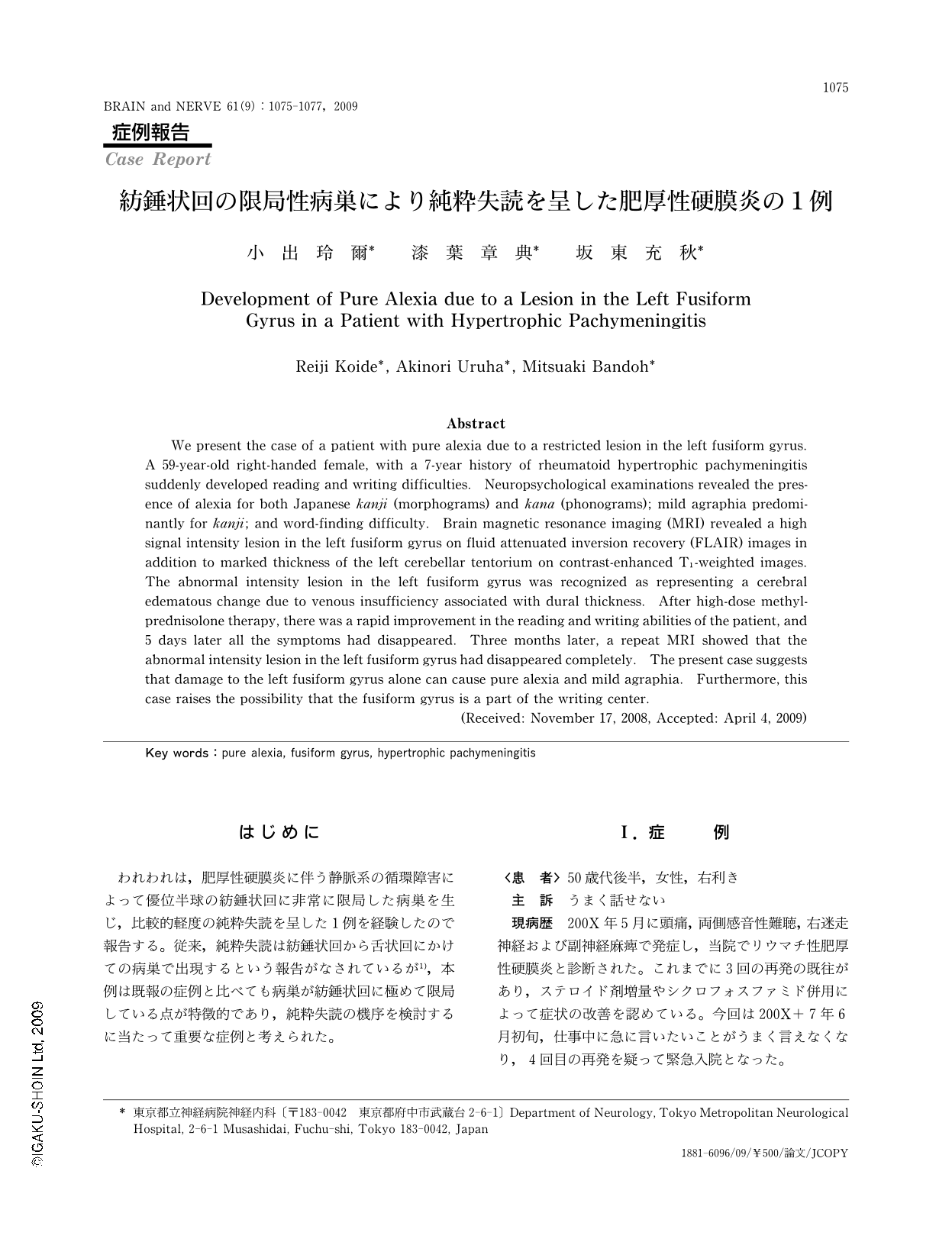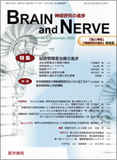Japanese
English
- 有料閲覧
- Abstract 文献概要
- 1ページ目 Look Inside
- 参考文献 Reference
はじめに
われわれは,肥厚性硬膜炎に伴う静脈系の循環障害によって優位半球の紡錘状回に非常に限局した病巣を生じ,比較的軽度の純粋失読を呈した1例を経験したので報告する。従来,純粋失読は紡錘状回から舌状回にかけての病巣で出現するという報告がなされているが1),本例は既報の症例と比べても病巣が紡錘状回に極めて限局している点が特徴的であり,純粋失読の機序を検討するに当たって重要な症例と考えられた。
Abstract
We present the case of a patient with pure alexia due to a restricted lesion in the left fusiform gyrus. A 59-year-old right-handed female, with a 7-year history of rheumatoid hypertrophic pachymeningitis suddenly developed reading and writing difficulties. Neuropsychological examinations revealed the presence of alexia for both Japanese kanji (morphograms) and kana (phonograms); mild agraphia predominantly for kanji; and word-finding difficulty. Brain magnetic resonance imaging (MRI) revealed a high signal intensity lesion in the left fusiform gyrus on fluid attenuated inversion recovery (FLAIR) images in addition to marked thickness of the left cerebellar tentorium on contrast-enhanced T1-weighted images. The abnormal intensity lesion in the left fusiform gyrus was recognized as representing a cerebral edematous change due to venous insufficiency associated with dural thickness. After high-dose methylprednisolone therapy, there was a rapid improvement in the reading and writing abilities of the patient, and 5 days later all the symptoms had disappeared. Three months later, a repeat MRI showed that the abnormal intensity lesion in the left fusiform gyrus had disappeared completely. The present case suggests that damage to the left fusiform gyrus alone can cause pure alexia and mild agraphia. Furthermore, this case raises the possibility that the fusiform gyrus is a part of the writing center.
(Received: November 17,2008,Accepted: April 4,2009)

Copyright © 2009, Igaku-Shoin Ltd. All rights reserved.


